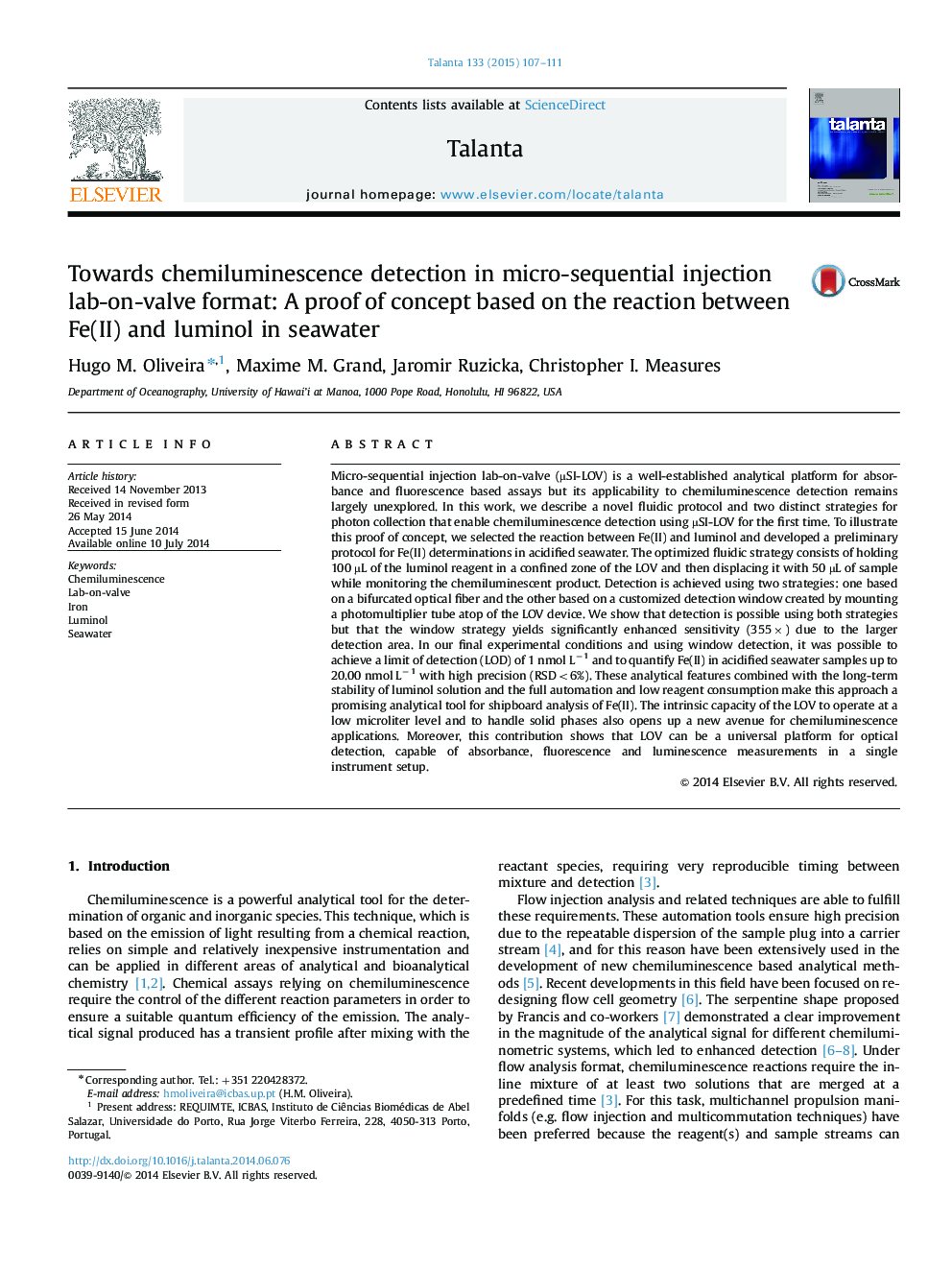| کد مقاله | کد نشریه | سال انتشار | مقاله انگلیسی | نسخه تمام متن |
|---|---|---|---|---|
| 1243432 | 1495802 | 2015 | 5 صفحه PDF | دانلود رایگان |

• First application of chemiluminescence detection under lab-on-valve (LOV) format.
• Luminol–Fe(II) chemiluminescence reaction in a single channel manifold.
• Dual-mode detection, using optical fibers or a customized detection window.
Micro-sequential injection lab-on-valve (µSI-LOV) is a well-established analytical platform for absorbance and fluorescence based assays but its applicability to chemiluminescence detection remains largely unexplored. In this work, we describe a novel fluidic protocol and two distinct strategies for photon collection that enable chemiluminescence detection using µSI-LOV for the first time. To illustrate this proof of concept, we selected the reaction between Fe(II) and luminol and developed a preliminary protocol for Fe(II) determinations in acidified seawater. The optimized fluidic strategy consists of holding 100 µL of the luminol reagent in a confined zone of the LOV and then displacing it with 50 µL of sample while monitoring the chemiluminescent product. Detection is achieved using two strategies: one based on a bifurcated optical fiber and the other based on a customized detection window created by mounting a photomultiplier tube atop of the LOV device. We show that detection is possible using both strategies but that the window strategy yields significantly enhanced sensitivity (355×) due to the larger detection area. In our final experimental conditions and using window detection, it was possible to achieve a limit of detection (LOD) of 1 nmol L−1 and to quantify Fe(II) in acidified seawater samples up to 20.00 nmol L−1 with high precision (RSD<6%). These analytical features combined with the long-term stability of luminol solution and the full automation and low reagent consumption make this approach a promising analytical tool for shipboard analysis of Fe(II). The intrinsic capacity of the LOV to operate at a low microliter level and to handle solid phases also opens up a new avenue for chemiluminescence applications. Moreover, this contribution shows that LOV can be a universal platform for optical detection, capable of absorbance, fluorescence and luminescence measurements in a single instrument setup.
Journal: Talanta - Volume 133, February 2015, Pages 107–111